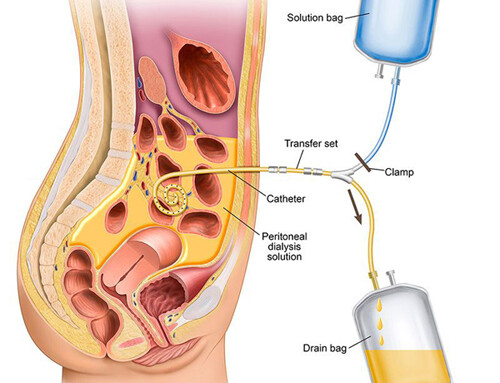Table of Contents
Continuous Renal Replacement Therapy (CRRT) is a form of slow dialysis for critically ill hemodynamically unstable patients. Why is it used?
- CRRT has NOT been shown to be associated with improved outcomes (mortality or renal recovery) then intermittent hemodialysis.
- CRRT is considered to be better tolerated than intermittent hemodialysis hemodynamically unstable patients.
- CRRT has been shown to result in better volume control in hemodynamically unstable patients.
Why is CRRT better tolerated and associated with better volume control in hemodynamically unstable patients?
Typical causes of hypotension with dialysis
- Blood leaves the body: Blood has to leave the body to go through the dialysis tubing and filter. This can cause an immediate drop in blood pressure, however most patients are able to tolerate the relatively small blood volume (150-250 ml) in the extracorporeal circuit without hemodynamic compromise.
- Osmotic shifts. Dialysis disequilibrium: Urea, other uremic osmoles and glucose (in severely hyperglycemic patients) are removed from the intravascular space relatively rapidly. There is a lag between redistribution of these osmoles from the intracellular to extracellular space. This causes a decrease in extracellular oncotic pressure. Fluid then moves down the osmotic gradient from the extracellular to the intracellular space. This tends to occur in patients who are severely azotemic (BUN > 150 mg/dl)
- Ultrafiltration: Fluid (volume) is removed from the intravascular space quicker than it can be redistributed from the interstitial space. Typically the body’s neurohormonal response is able to compensate and maintain the blood pressure. However, if the ultrafiltration rate is too fast or the neurohormonal response is impaired hypotension may occur. This is the main cause of hypotension in dialysis.
How much fluid can be removed with dialysis?
- The maximum recommended ultrafiltration rate for chronic intermittent hemodialysis is 13ml/kg/hr.
- Although many patients can tolerate ultrafiltration rates higher than this, they are associated with a higher long term mortality.
- Bottom line: For most patients the maximum ultrafiltration rate should be < 750 – 1000 ml/ hr.
What are the differences between conventional HD and CRRT?
- Blood flow rate: The blood flow rate typically is slower for CRRT (150-250 ml/min) than conventional HD (300-500 ml/min). It is a common belief that a slower blood flow rate is less likely to cause hypotension , however this is NOT the case. Why not?
The same amount of fluid is outside the body (in the extracorporeal circuit) at any given time regardless of the blood flow rate. While it is true that the volume of the dialysis tubing is less for the CRRT NxStage machine (171 ml) than Fresenius hemodialysis machines (248 ml), this is not the explanation why CRRT is better tolerated hemodynamically.
- Osmotic shifts: The clearance of urea and other osmotically active solutes is slower with CRRT than hemodialysis. Although this may not have a significant impact on blood pressure it will mitigate osmotic fluid shifts from the extracellular to intracellular space. For this reason CRRT is the preferred dialysis modality for patients with increased intracranial pressure or hepatic encephalopathy.
- Ultrafiltration rate: The real benefit of CRRT is that the hourly ultrafiltration rates are slower. The hourly ultrafiltration rates for CRRT are often in the 50 ml – 200 ml/ hr range. This is often an issue for critically ill patients who have a high obligate volume intake from medications, transfusions, and nutrition (enteral or TPN).
Example:
If an ICU patient has an obligate fluid intake of 2 liters daily the UF rates necessary to maintain euvolemia are:
- Conventional three times a week 4 hour HD – 1166 ml/ hr
- Four times a week 4 hour HD – 875 ml/ hr
- Daily 4 hour HD – 500 ml/ hr
- CRRT (24 hour day) – 83 ml/ hr
This is just to maintain neutral volume status. These patients are often volume overloaded due to hypotension treated with volume and AKI with oliguria prior to initiation of RRT.
Summary
CRRT is the preferred renal replacement therapy in critically ill patients who are hemodynamically unstable and/or have increased intracranial pressure. Although it has not been demonstrated to be associated with improved mortality or renal recovery it is widely believed to be better tolerated hemodynamically and is better at preventing and treating volume overload.
The differences between CRRT and intermittent HD are:
- Slower blood flow rate
- Slower solute removal
- Lower ultrafiltration rate
Slower solute removal makes CRRT the preferred modality for patients with intracranial hypertension and the slower ultrafiltration rates allow for better volume management.
For more information check out this article: Continuous KRT: A Contemporary Review : Clinical Journal of the American Society of Nephrology



